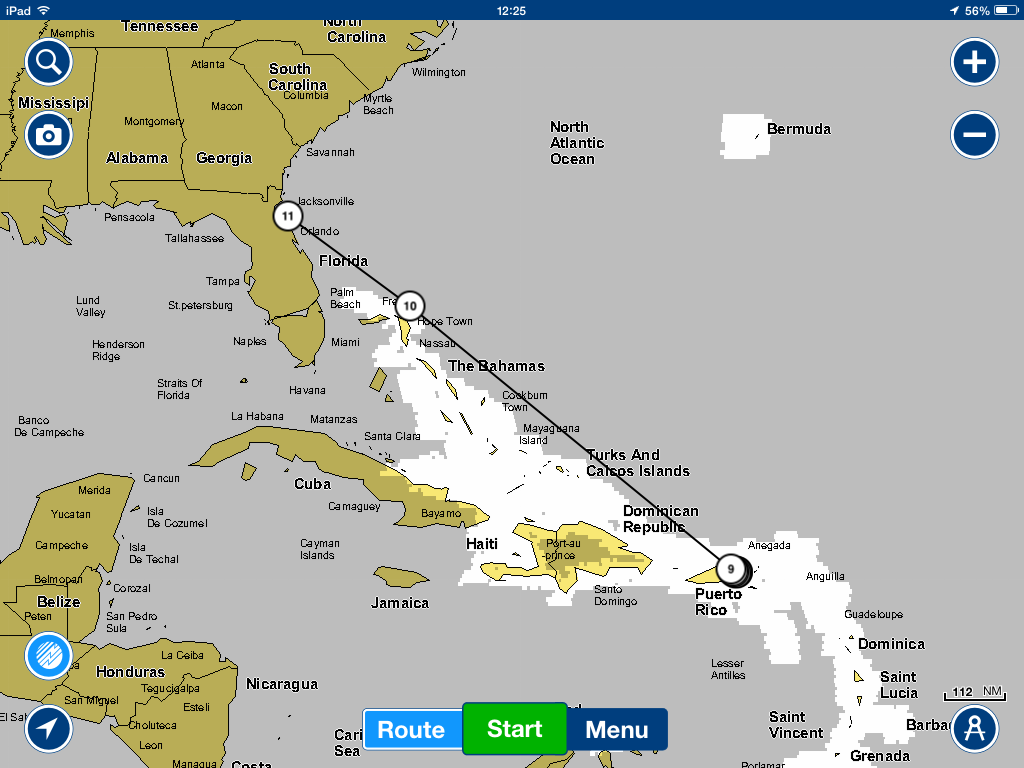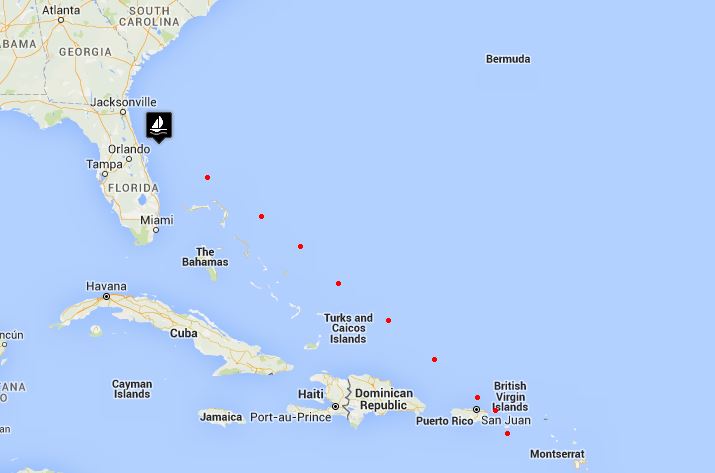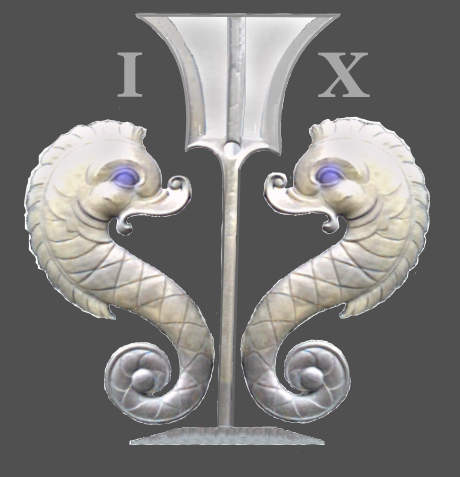 Day 4 - 675 nm to go
Day 4 - 675 nm to go
Another gorgeous day in paradise. The change in winds has been delayed, it seems, and the E/SE winds along with that half knot current, continue to move us along smartly. The current is a faint vestige of the North Equatorial Current that snakes its way along the northeast side of the island chain and eventually joins forces with the mighty Gulf Stream. We've seen nary a nasty cloud nor a raindrop since we left Culebra and we wonder when our wonderful weather bubble will burst. Maybe tomorrow.
It was a rather momentous day. Around dinner time, we marked 1000 miles sailed since leaving Trinidad. With no oceans to cross, it's harder to get higher mileage. We keep bumping into land and stopping. Around 2200, we crossed the Tropic of Cancer (~23.5N) and officially exited the tropics. I slept through it (my off-watch) and woke to find I needed a fleece and blanket. Actually, the early morning hours between midnight and 0600 seem to be quite cool and we enjoy needing a long-sleeved shirt or light blanket for a change after the recent sweaty, humid temps of the tropics.
Typically, there's a ring of thick clouds on the horizon that encircles us each morning with a clear blue sky above, like the tonsure of good friar's head. The waves have increased in size to 6-10' (2-3m) and we can feel their push as they pass under us. I sometimes contemplate the amount of water volume and force necessary to sweep 20-ton Cups along like a twig in a fast-flowing river. It's the same feel as body-surfing a big wave at the beach when it surrounds you, picks you up and carries to shore with a gush.
Being in the Bermuda Triangle has conjured up all sorts of images in my mind. I half expect to see a huge, long, suckered tentacle reach out of the sea on my night watch and wrap itself around Cups and drag us down to the depths. I've obviously been reading too much BT lore which I realize has “mostly” been proven to be exaggerated and downright wrong. Still … we've seen very few birds and no dolphins or whales. Maybe they know something we don't?
Day 5 – 534 nm to go
The winds diminished and changed direction to <10 knots from the south between 0300-0600 and we slowed down considerably. It was still a pleasant ride, but we were noticeably off our course line. The wind god finally ran out of wind altogether late in the afternoon as predicted. When we fell below 2 kts/hr, we reluctantly cranked on the engine, knowing if the forecast was right, it would be on for the next 24 hours.
By the change of the 2100 watch, the south wind was unexpectedly, but thankfully, back. It wasn't much, but enough to sail along at 4 knots on a broad reach. It prevailed all through the night, long enough for David to pick up the revised weather forecast which showed exactly what we'd been seeing. Thank you, Neptune.
We've been making plans for the rest of 2016, as well as contemplating short-term projects on Cups. The trim around the portlights in the saloon and aft cabin all need re-varnishing. In preparation, I removed all the window coverings, rods and hardware and have decided all the “drapes”need to be replaced. If the good weather continues, we might get the portlights sanded and prepped before our arrival in St. Augustine, allowing us a headstart on getting the project completed before heading further north. The usual number of things are breaking, i.e. the manual foot pump for the fresh water isn't working and needs either repair or replacement. David also thinks it's time to replace all the water hoses for the watermaker. He's still pondering the refrigeration issue and tinkers with it daily. Always, always, always a list!
Day 6 – 418nm to go
It was a slow, slow day, but we were still sailing. We saluted Gentry, our web mistress, as we sailed by Gentry Bank off the Turks and Caicos. As we passed by the Bahamian islands, we reminisced about the time spent there more than a decade ago … Mayaguana, Rum Cay, San Salvador, Eleuthera, the Abacos ... so many little islands, so many memories. Imagine how Columbus and crew must have felt when they arrived in this paradise.
The days are noticeably longer. Dawn's first light is around 0530 and the residue of sunset is still on the horizon at 2000. There's much to be said for heading north as summer approaches. The wind left us again just after noon and in a huff. A bit of a gust was followed by a drenching shower, the first rain we've seen since leaving Culebra. The downpour cleaned the dust and dirt off the decks and the cockpit looked refreshed. The rain seemed to wash all the color from the day. The blue, sunny sky we've grown accustomed to was sapped of its brilliance, replaced by a washed-out blue-grey, overcast sky that merged with the horizon and the now drab waters of the Atlantic. We expected more showers, but they never came.
Once our speed dropped below 2 knots, we cranked on the engine again. The seas were flat and calm with nary a wind ripple to disturb them. The wind indicator showed 0 wind speed … we were smack dab in the middle of a high pressure.
We've been reading Mark Twain's “Innocents Abroad” … it's a free download on Gutenberg.
If you've read Paul Theroux's curmudgeon-y travel books and enjoy his caustic humor, you might enjoy this Twain classic. Talk about an “ugly American”, Twain's flowery prose mixes with acerbic wit as he travels with fellow Americans in the late 19th century through Europe, northern Africa and the Holy Land. David finished it before I did. I refer to it as “Innocents Asleep” and trudge through a chapter just before it's time for me to go off-watch. Robert B. Parker's Spenser series has kept me awake during the midnight-0300 watch.
Affiliate links added for your convenience.
 Day 7 - 278 nm to go
Day 7 - 278 nm to go

 Day 4 - 675 nm to go
Day 4 - 675 nm to go



